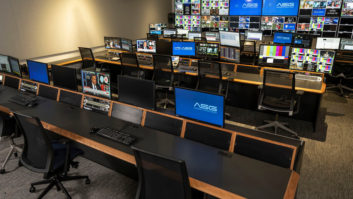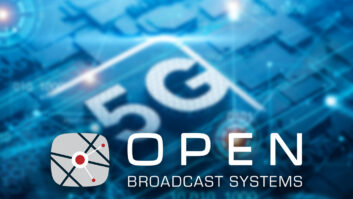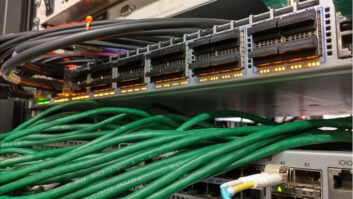
While 4K for the acquisition and post market is now relatively well understood, systems integrators are struggling to achieve a realtime production workflow. Jonathan Lyth, systems manager, C2S Systems reckons this is down to the economic restraints inherent to the quadrant-based, Quad-link, SDI standards.
“Manufacturers can build routers, mixers, monitoring and conversion solutions, but it is still four 3Gbps paths bonded to create the required result,” he said. “You have to be sure a customer is dedicated to 4K to offer a solution with a spend at four times the cost of a 1080p solution in the key equipment areas.”
A hybrid system, such as those seen at the Confederations Cup last year, with key elements in 4K and up-converted 2K for the gaps, is, in Lyth’s opinion, the best way forward until 12G-SDI capable solutions become available.
“With the rate of development in FPGAs and advances in fibre technology recently, I don’t think we’ll have to wait for too long for a single path 12G-SDI standard,” he said. “Whether it’s a single wavelength carrier or an embedded modulated solution is yet to be seen, but there will need to be the eventual reduction of costs we saw with 3G-SDI if 4K is to flourish the way the industry needs it to.”
Lyth added that C2S clients with large long-term projects are asking for consideration to be made to future-proof their investments as happened previously with 4:3-16:9 SD, SD-HD and, briefly, HD-3D.
With Amazon and Netflix originating programming in 4K and testing 4K distribution, OTT may be the first service to showcase Ultra HD content. Initially this will require effective encoding of video to maintain a small file size and bit stream, while still maximising video quality that demonstrates 4K’s potential.
According to Gabriel Dusil, chief marketing and corporate strategy officer at SI and OTT specialist Visual Unity, this will require adaptive bitrate technologies over CDNs and the internet, especially in regions that don’t yet have the bandwidth or latency resilience to showcase 4K full resolution.
“It will be the early adopters that will fuel market penetration to the early and late majority consumers,” Dusil suggested.
Support for the H.265 codec is integrally tied to 4K video streaming, and provided it reduces bandwidth by up to 50% as promised, it could become the de facto encoder for all digital video, HD or SD.
“Suppliers need to be ready with their support of H.265 and 4K, long before the market is flooded with requests,” advised Dusil.
Sony continues to emphasise the positive. “The number of enquiries we receive about 4K is growing day by day,” claimed head of AV Media, Olivier Bovis.
“For many clients, it’s a matter of investing in 4K to deliver the best possible HD content now, whilst also being ready for a move to 4K in the future. Others invest in Sony’s 4K kit in order take advantage of picture stitching, again providing excellent HD footage now. What’s interesting is that 4K has moved from purely a matter of technology to one of monetary consideration – investing now to future proof,” as with Peter Gabriel’s London concerts (pictured) shot in 4K using up to ten Sony PMW-F55 cameras recently.
By Adrian Pennington
www.c2ssystems.com
www.pro.sony.eu
www.visualunity.com







